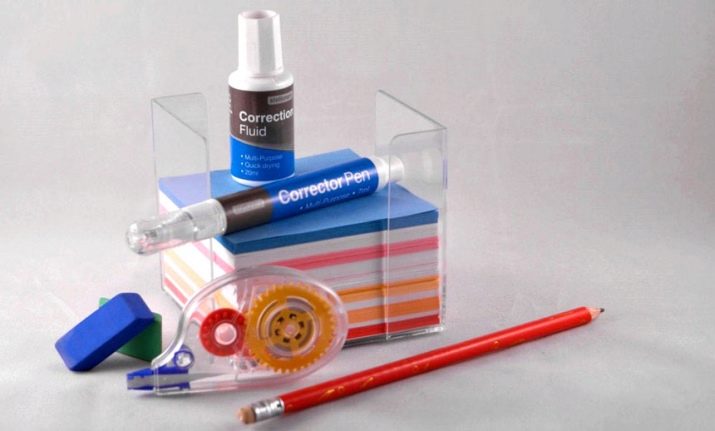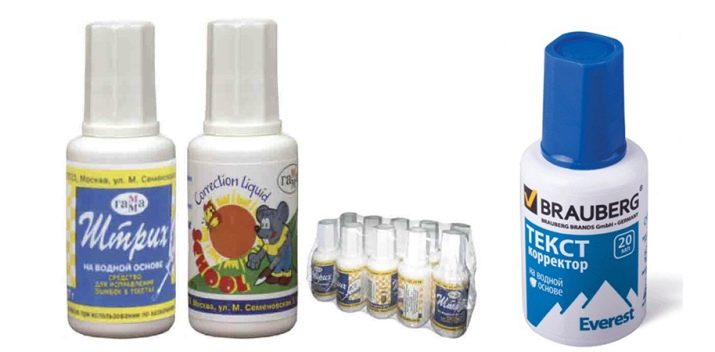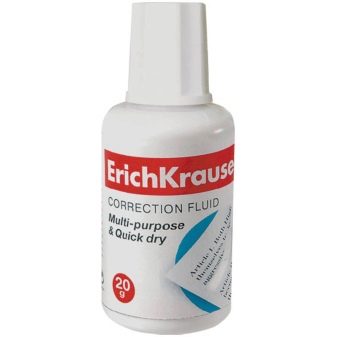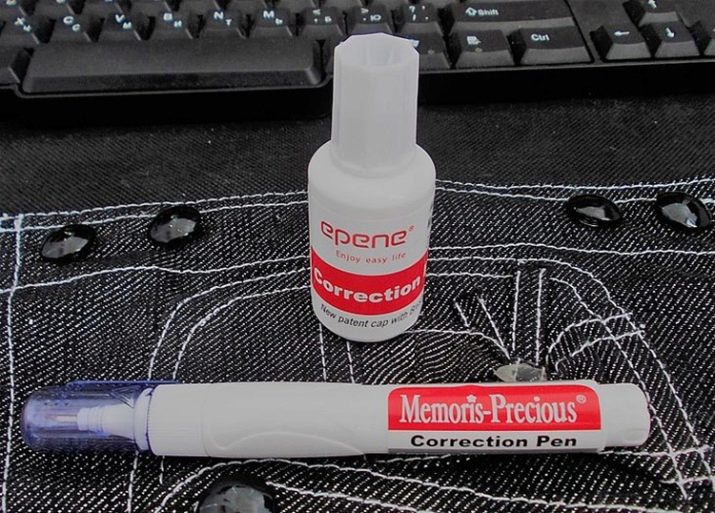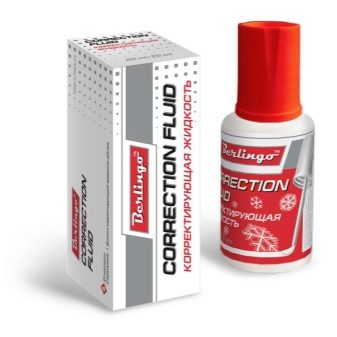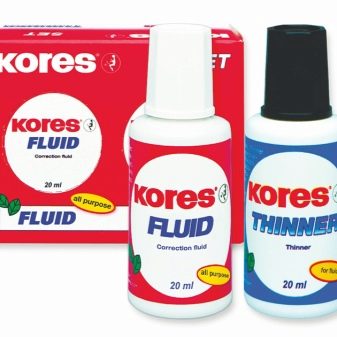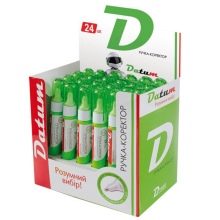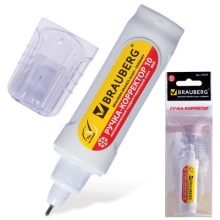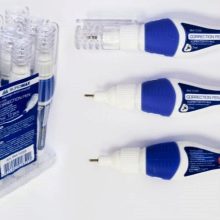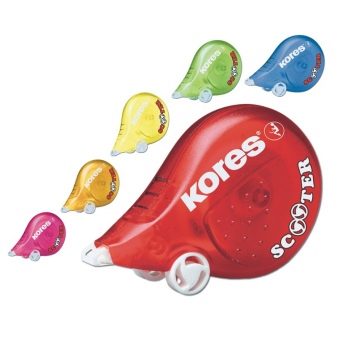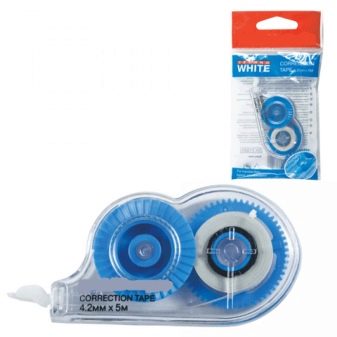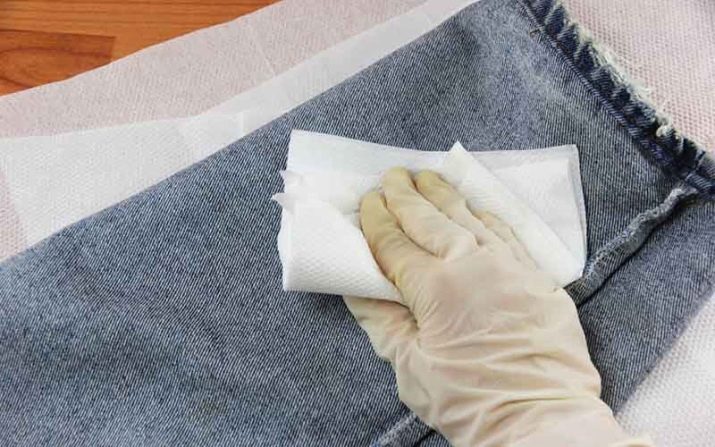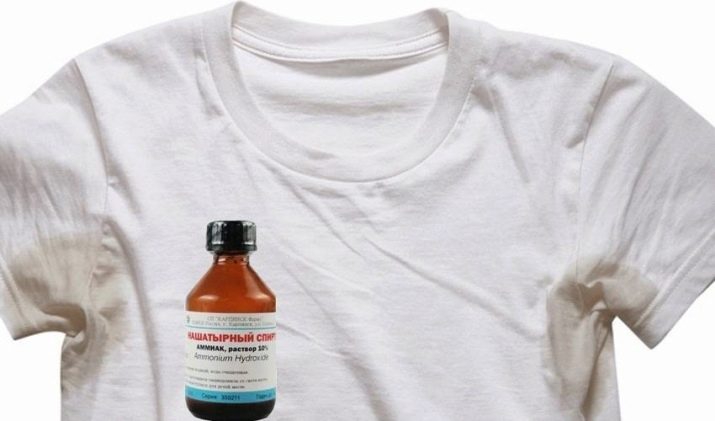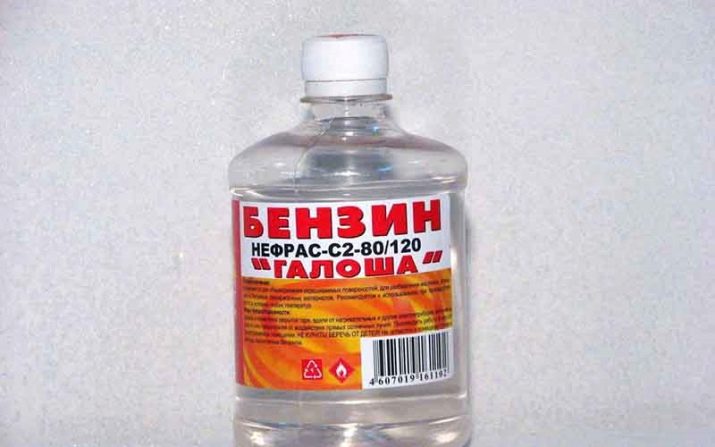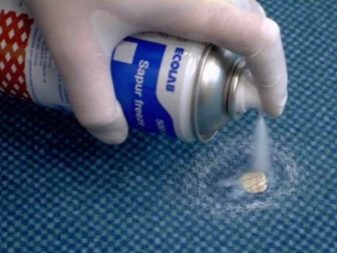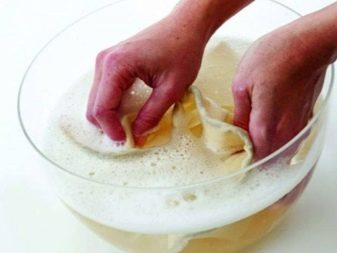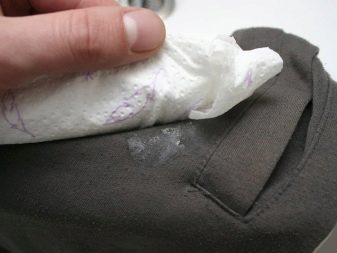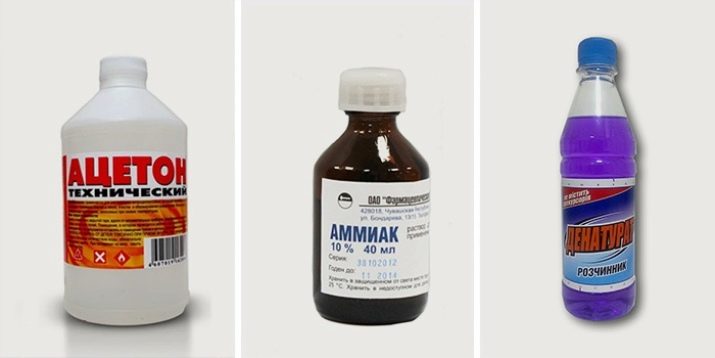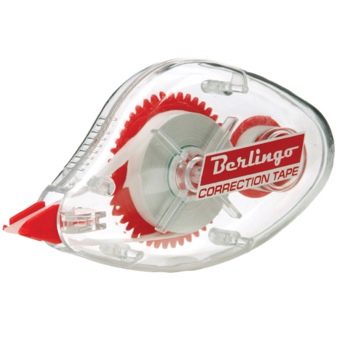How to wash concealer from clothes?
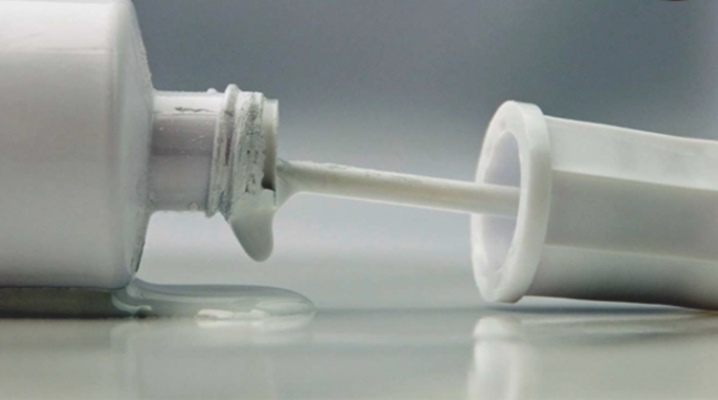
Proofreader is a very popular tool among the population using paper data carriers. For the first time its analogues appeared in the 50s of the twentieth century. Over the past years they have undergone tremendous changes, seemingly insignificant at first glance.
This office putty has been used for a long time by office and government workers. It is easy to use and allows you to get rid of the mistakes made in documents and notebooks. However, with careless use of the corrector on clothing, stains may appear, which are not easy to remove. Schoolchildren, students, office staff often face the problem of cleaning things.
As practice shows, this can be done, the main thing is to start this as soon as possible from the moment of pollution.
Features of the composition
To determine what actions to take to clean, you need to know what chemical composition has a corrector. It is completely impossible to determine it, since it is usually the secret of the manufacturer. There are chemical compounds that are present in any corrective composition, regardless of the company. These include calcium carbonate and titanium dioxide or highly purified gasoline.
The most important criterion is the base, the composition of which is always indicated.
Water
The most simple and eco-friendly type of "stroke". Water is used as a solvent, therefore correctors are afraid of low temperatures. They are safe for children and allergies, because they are odorless and do not ignite. Water samples are suitable for paper of any quality. If the solution thickens, it can be diluted with water and used again. Users note as a drawback the long drying time is about 1 minute.
Alcoholic
The alcohol-based corrector is more efficient than the first because it dries faster. The solvent is alcohol, which causes resistance to low temperatures. However, the "touch" flammable and has a pungent odor therefore, they should be used with caution.
At thickening, the corrector can be diluted only with solvents of a similar company.
Oil
Oil emulsion combines the advantages of the first two types of proofreaders. In domestic stores is rare and more expensive.
Liquid and dry
There is a division of corrective products on the structure of liquid and dry.
The first group includes the following:
- Corrective fluid. They are produced in the form of a plastic bottle, the lid of which is provided with a brush or applicator. Today we can consider this type of corrector obsolete, since manufacturers offer more convenient forms.
Inside any liquid corrector there should be a shaker ball, which, when shaking the case, mixes the composition, making it uniform.
- In the form of a pencil or pen. In this case, the rod is charged not with ink, but with correction fluid. The principle of operation - when pressing on the case, made, as a rule, of soft plastic, corrective means are introduced into the resulting void. Dignity - ergonomics and accuracy in correcting small parts, disadvantage - difficulties when working with large text. In addition, users note the littering of the writing node, since the “dash”, when dry, clogs it. The instructions advise not to forget to close it with a protective cap.
- Dry type proofreaders are scooters. In a convenient plastic case have a special twisted tape, which is applied when holding the roller on the sheet with pressure.Width of a trace varies from 4 to 6 mm. The structure densely adjoins to paper and is almost imperceptible. The advantages are the ability to write immediately, the absence of spills and freezing, good ink coverage. As a rule, the chemical composition of the tape provides practical whiteness, continuity and strength. The lack of a dry “touch” is a break in the correction tape, if the product is used with violations.
How to scrub at home?
The first rule in contact with the corrector on clothing - do not panic and do not rub the stain than falling. Fresh trail should be blotted with a dry cloth, moving from the edge to the center. While the stain dries, you can examine the composition and determine the method of its removal.
If the contamination comes from a tape roller, then the thing should be soaked briefly in warm, soapy water. The tape will be sodden and easy to remove. After the place should be cleaned with a brush and wash.
Water-based stationery putty is the easiest to clean. It is enough to put a handkerchief under the stain to prevent the stain from spreading to the sides and rub it with laundry soap. The main thing is not much to rub. In this form, leave for a few minutes to the soap components destroyed the elements that make up the corrector. In this case, completely immerse the thing in the water is not necessary. Subsequently, the item should be washed in the washing machine at maximum speed or manually.
Experts also advise using a stain remover as a surgical intervention. To do this, it should be applied to the contaminated place and left for 1-2 minutes, then loaded into the machine and add another 100-150 ml to the drum with linen. To erase at water temperature not higher than 30-35 degrees.
Even if there was no soap or powder on hand, do not despair. In the case of a water proofreader, shampoo or dishwashing liquid comes in handy.
All of these treatments are suitable for any type of fabric.
To dissolve the alcohol corrector, you can either purchase a special anti-shading liquid or use any other liquid that contains alcohol: vodka, cologne, tonic. The algorithm of action will be as follows:
- We need to wait for the pollution to dry.
- Then clean it from your pants or jeans with a nail file, brush or any other hard object. These actions will prevent an increase in the spot.
- The thing is placed on a hard surface, which is pre-coated with a clean towel or cloth. The main thing that this lining does not fade. The area around the site of contamination should be gently wetted with water, which will keep the boundaries of the stain without increasing it. After a piece of clean cloth or a cotton swab, treat the stain with an alcohol solution, moving from the edges to the middle. It is impossible to press hard. After 15 minutes, the procedure should be repeated.
- In the end, the thing will need to be washed in the washing machine.
Treatment with anti-shading is similar. After removing the solid dried traces, the contamination is covered with a special substance, and after a while it is blotted with a clean napkin.
Do not process clothes with perfume or toilet water. First, they have a persistent smell, which is difficult to get rid of. Secondly, they contain little alcohol, so the effect may be weak.
To remove an oil-based “stroke” from a trouser or jacket, you will have to suffer, since removing such stains is similar to removing emulsion paint from surfaces. The easiest way is to give the thing to dry cleaning.
At home, before removing the dried residues removed with a brush or nail file. Pre-soaking is contraindicated. Then you can use a chemical substance developed for this purpose.
The easiest to apply ammonia solution. To do this, water is mixed with ammonia in a ratio of 2: 1 and wipe the stain with a cotton pad or a clean cloth.This should be done from the inside of the product by placing it on the front side of the napkin. After 15-20 minutes, the item is washed in running water. At the end of the treatment, the clothes should be washed in the machine as usual.
Some advise using nail polish remover or other household chemicals. In any of the proposed options, the stain is treated on the wrong side, after checking the reaction of the material to the solvent.
Stubborn stains are rarely defeated by improvised means. Household chemicals are resorted to only if the methods listed above did not help or if it was not possible to promptly clean the clothes.
Many solvents, such as white spirit, kerosene or acetone, can damage fabric fibers. To remove pollution, it must be treated on both sides, without rubbing into the material. Subsequently, the item must be washed, possibly several times. Since there is a strong smell, it is recommended to ventilate the fabric in the open air. It should be remembered that all these chemicals are flammable, so compliance with fire safety equipment is extremely important.
Means for home use:
- Soap and washing powder are suitable only in the simplest cases with stains from water correctors.
- Ammonia or ammonia is used for contaminants derived from alcohol or oil correction fluids. To do this, prepare a solution in which a tampon is moistened and applied to the stain.
- Gasoline must be refined. This is bought in a store, not at gas stations. It is not suitable for synthetic clothing because it dissolves fibers. It is important to remember that gasoline has a peculiar smell that is difficult to get rid of.
- Denatured alcohol is used to remove stains from alcohol corrector. Users celebrate excellent results after application.
- Vodka or another strong colorless alcoholic beverage after application for 15-20 minutes will allow to eliminate minor impurities of the “stroke” on the basis of alcohol.
- Special means for eliminating the consequences left on clothes are sold in stationery stores. The main thing is to follow the instructions correctly.
With different types of fabric
To a greater extent, the ability to remove traces from the corrector depends on its composition. However, the material from which the damaged clothing was sewn is also an important factor. No wonder such delicate fabrics as velvet, silk and satin are recommended to be immediately carried in dry cleaning, so as not to spoil the product. During cleaning, the surface or the fibers themselves may be damaged, and hooks will appear.
Useful tips
If there is no certainty, suitable solvents or time is missed, it is better not to experiment, but take the clothes to dry cleaning.
It is not recommended to wash clothes before dry-cleaning.. Before you wash the stains off the garment from the clothes, you need to blot it with a napkin or a piece of paper before it dries. You can not rub a fresh spot, because the deeper the “stroke” is rubbed into the fabric, the harder it will be to remove.
Before using chemical solvents, you should check the fabric reaction on a separately chosen, inconspicuous place, for example, on the internal seams. Pure acetone is used only to clean white things, as it eats away paint. Delicate things better to handle a chemical solution diluted with water. To clean the place around the pollution, it should be treated with water so that when processing with an aggressive solvent it does not spread.
Washing will be effective if you pre-soak the thing in warm water for a while. The recommended mode of the automatic machine for high-quality cleaning is maximum.
For younger students, it is better to refrain from buying “strokes”; if necessary, it is better to purchase scooters or water-based correctors. It should be explained to the child how to act in case of contamination of clothes with the corrector, to teach the initial cleaning on their own.
Buying a roller, it is better to pay attention to the options with a transparent body. It allows not only to exercise control over the consumption of a correction tape, but also to prevent defects that arise: twisting or breakage.
Recently, manufacturers offer options for roller-proofers with a collapsible body, which is convenient for troubleshooting. In the case of a tape break, you can open it and remove the problem. Models of this type usually last longer, whereas with a molded case, sometimes a “stroke” has to be thrown away without using a tape.
How to remove the corrector from the clothes, see the next video.

